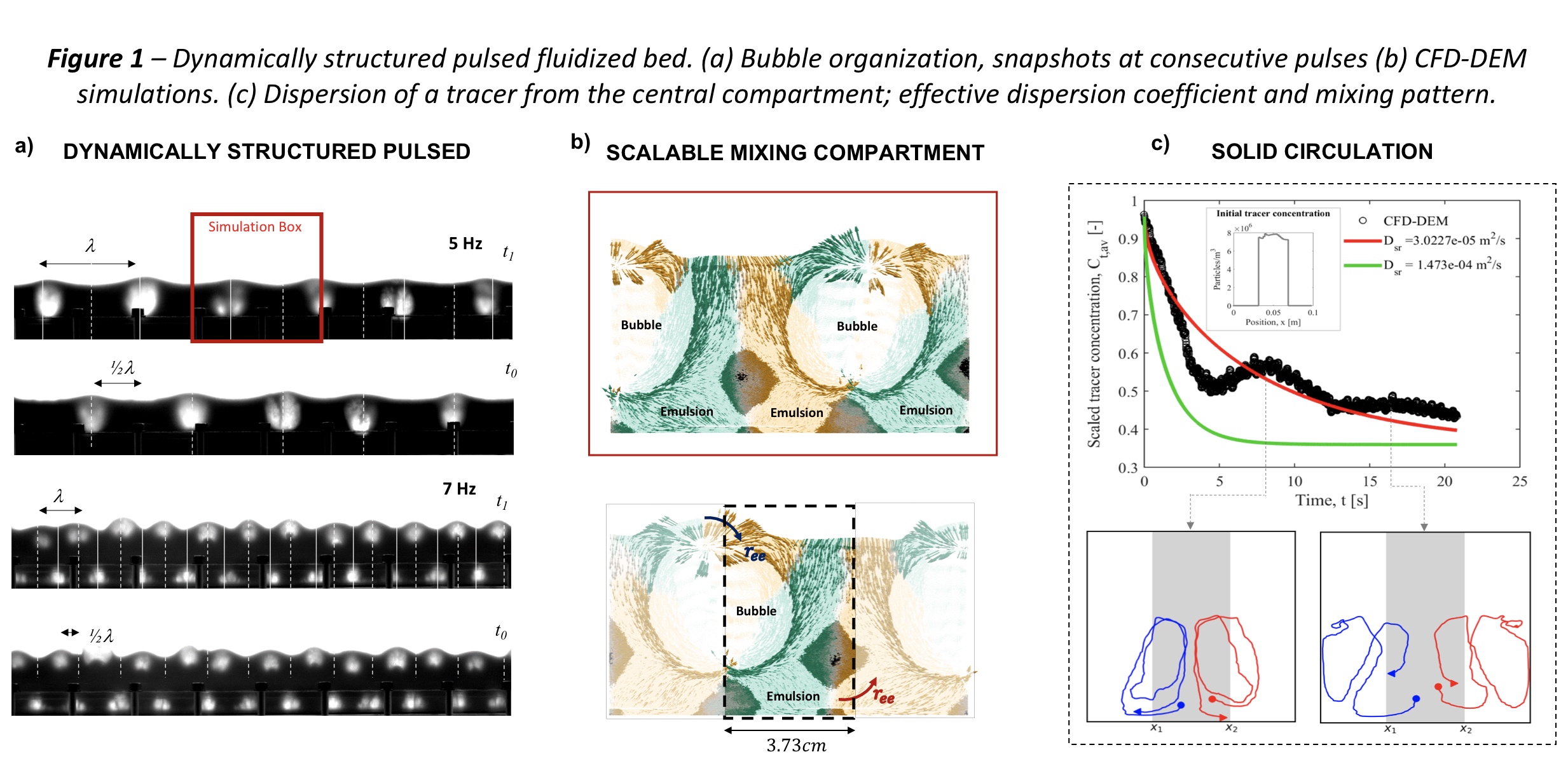2020 Virtual AIChE Annual Meeting
(189f) Controlled Mixing in a Dynamically Structured, Pulsed Fluidized Bed
Authors
In this contribution we study structured and unstructured bubbling beds of Geldart B particles for various oscillating frequencies experimentally (Figure 1a), and quantify the associated degree of mixing with an effective lateral dispersion coefficient extracted from CFD-DEM simulations, validated in a quasi-2D system (Figure 1b). The mixing and solid circulation in a dynamically structured system exhibits major quantitative and qualitative differences. The organization of bubbles into a pattern contains the solids into a series of mixing compartments that rearrange every pulse. Unlike in a traditional operation, solid dispersion can no longer be described as a diffusive process. It is dominated by advection. A constant exchange rate between mixing compartments establishes a long-range lateral circulation, which depends on the bed dimensions. Solid mixing remains confined to a single type of loop fixed around each compartment and is superimposed to short-range velocity fluctuations caused by the oscillation. The scale of the mixing loops is constant and independent of the bed dimensions (Figure 1c), but it can be externally controlled by the amplitude and frequency of the gas flow oscillations. Here, we report exchange rates between the phases and across compartments, along with the values for an effective lateral dispersion coefficient in dynamically structured beds of Geldart B particles. This information can be used to inform surrogate models and enable the design and scale-up of larger devices that, besides homogenization, present unique advantages, namely scalability and external control. By modulating changes in gas velocity, one can fix the volume of the mixing compartments and, via external control, tailor transport rates and the stresses sustained by the powder. The ability to mix at very low gas velocities in a homogeneous and controllable way opens new ways to tackle heat and mass transfer management, as well as keep elutriation and attrition in check, which are particularly relevant issues for highly exothermic processes, or thermally sensitive and high-value materials.
